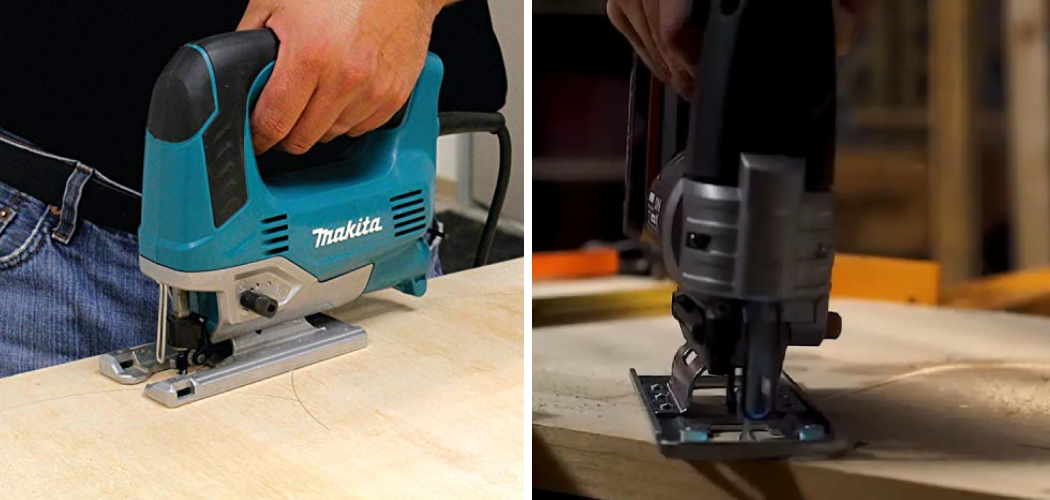If you’ve ever tried to follow the instructions for a project that requires cutting plywood and ends up with uneven, splintered boards, then it is time to master how to cut plywood with a jigsaw. Sure, using a circular saw or table saw is a great way of creating clean cuts in pieces of wood, but when the job calls for something more intricate—like shaping curves—a jigsaw may be just what you need.
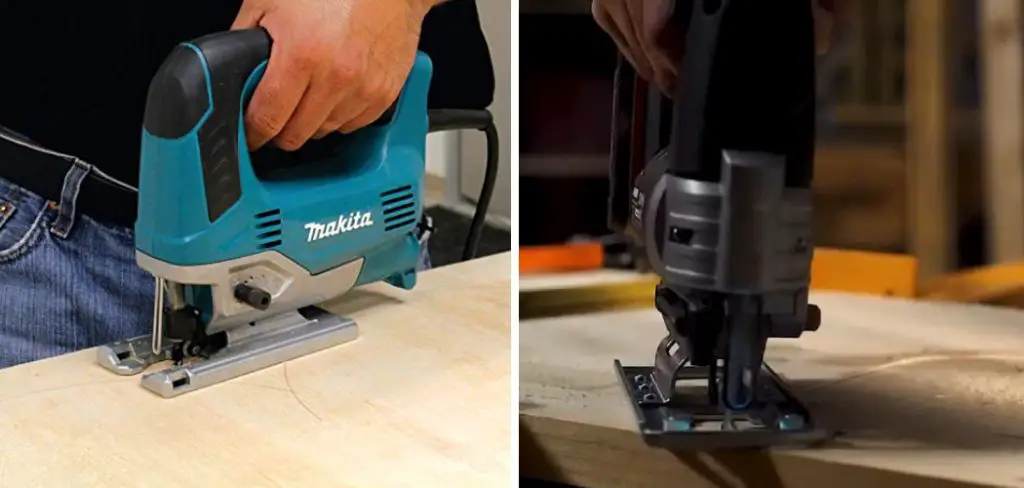
With some know-how to cut plywood with a jigsaw without splintering on which blade type to use and tips for clamping your material down properly so it doesn’t vibrate out of place mid-cut, anyone can make accurate cuts in their workpiece every single time! Read on as we dive into everything from selecting the best blades for certain types of materials all the way up to making precise finishing touches.
What is Splintering?
Splintering is when the wood fibers of your workpiece come apart during the cutting process. This can cause a rougher, less accurate cut and removes precious material that may be needed for the job. Here are some tips to help you avoid this pesky problem.
Things to Consider Before Cutting Plywood With a Jigsaw Without Splintering
1. Choose the Right Blade
The type of blade you use to cut plywood can have a big impact on how the finished product looks. For most jobs, it’s best to select a blade with small teeth as this will help reduce splintering. If you are cutting thicker plywood, then using a larger-toothed blade can help reduce the amount of dust created.
2. Clamp Your Workpiece
Making sure your workpiece is securely clamped down to a stable surface before you start cutting will ensure that it doesn’t move around during the process, causing an uneven cut or splintering. If possible, use two clamps on either side of your workpiece to hold it in place.
3. Take Your Time
Taking your time when cutting plywood with a jigsaw is essential for ensuring that you get a clean cut without any splintering. Make sure to take slow and steady passes as opposed to rushing through the process, which can lead to an uneven edge or worse.
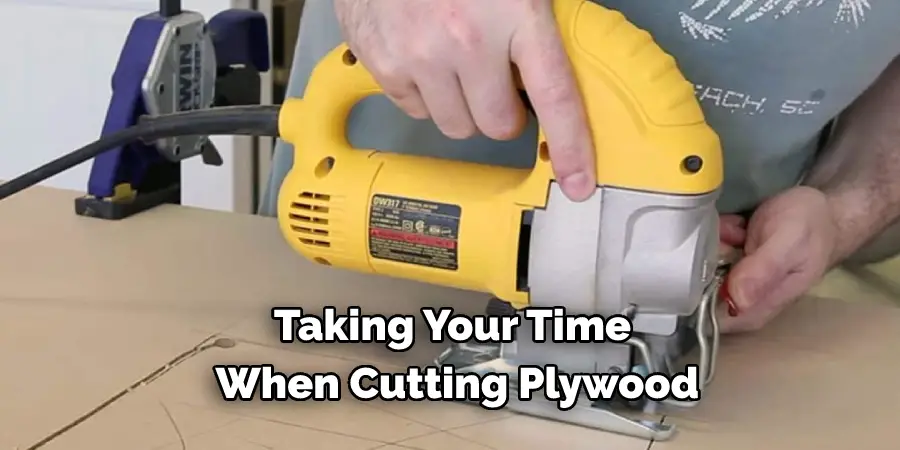
Required Items
- Jigsaw
- Plywood (thickness according to the project)
- Appropriate jigsaw blades for cutting plywood
- Clamps
10 Tips on How to Cut Plywood With a Jigsaw Without Splintering
1. Secure the Workpiece
Start by securing your workpiece. Clamp it down onto a flat, stable surface and make sure that it won’t move around while you are cutting. The fact that plywood is thin and lightweight makes it easy to move around when cutting, so this step is essential for ensuring an accurate cut without any splintering.
2. Select the Right Blade
Choosing the right blade for your project is crucial for getting a clean cut without any splintering. It’s best to use a blade with small teeth when cutting thin plywood and larger-toothed blades for thicker pieces.
3. Set the Blade Depth
Setting the blade depth is an important step in preventing splintering. If it’s set too deep, then it can tear through the wood fibers of your workpiece as you cut, causing splintering. The depth you need to set your blade will vary depending on the thickness of your plywood, so make sure to adjust it accordingly.
4. Start With a Slow Speed
When first starting out, it’s best, to begin with, a slow speed and gradually increase it as you become more comfortable with the jigsaw. This will help you get a feel for the tool and make sure that you don’t splinter your wood fibers by cutting too quickly.
5. Cut From the Bottom to the Top
It is best practice to cut from the bottom of your workpiece up towards the top, as this helps reduce splintering. This prevents the blade from shearing off wood fibers as it passes through the material, resulting in a cleaner cut.
6. Cut With Long Strokes
When cutting with a jigsaw, try to make long, steady strokes instead of short ones. This helps keep your workpiece in place and gives you more control over the blade. It also prevents splintering by ensuring that the material is cut evenly and smoothly instead of in jerky, uneven movements.
7. Push Down on the Jigsaw
To make sure your cuts are accurate and smooth, you should always press down lightly on the jigsaw as you work your way through your workpiece. This helps the blade keep its course and prevents it from veering off in different directions, which can cause splintering.
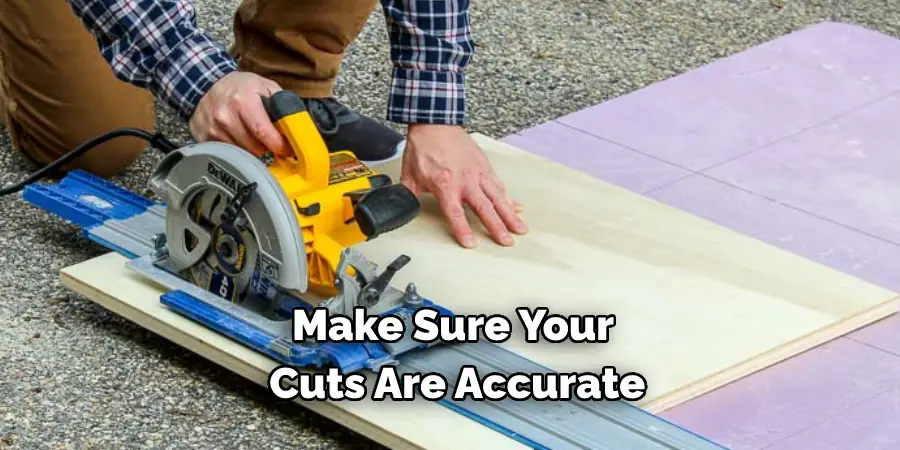
8. Finish With a Finishing Cut
Once you’ve finished cutting your workpiece, always go back over the cut with a finishing cut to help remove any loose wood fibers or rough edges. This will help smooth out the cut and reduce splintering.
9. Sand Down Edges
Once you’ve finished cutting your plywood with a jigsaw, it’s always a good idea to sand down the rough edges to help get rid of any additional splintering. You can use a belt sander, an orbital sander, or sandpaper to do this.
10. Use a Sealant
Finally, it’s always a good idea to finish off your project by using a sealant on the edges of the plywood. This will help protect it from moisture and reduce any further splintering that could occur over time.
Following these tips will help you get a clean cut without any splintering when cutting plywood with a jigsaw. Always remember to take your time and practice safety when using this tool so that you can avoid any unfortunate accidents or injuries!
8 Safety Precautions to Take When Using a Jigsaw
1. Wear Appropriate Safety Gear
When using any power tool, it’s important to always wear the appropriate safety gear. This includes goggles, gloves, long pants and sleeves, steel-toed shoes, and a dust mask. Safety wear is essential for protecting your eyes and skin from any flying debris or sparks.
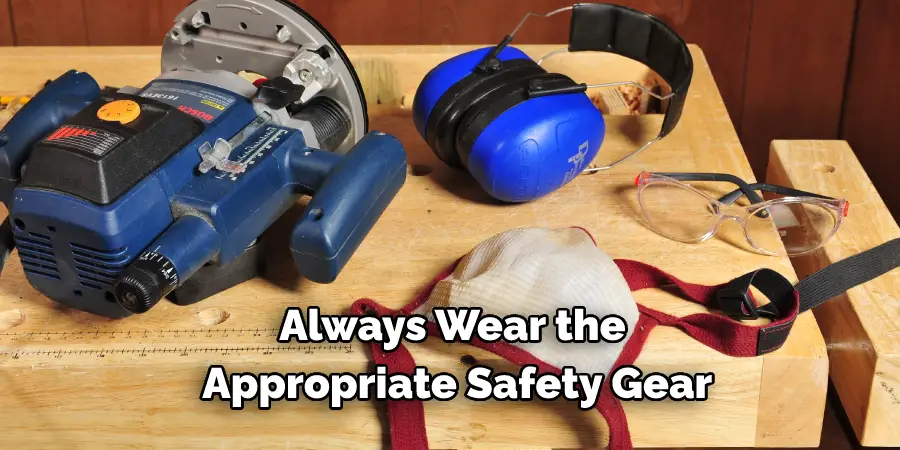
2. Use a Clamp
It’s always important to use a clamp when using a jigsaw, as this helps keep the workpiece secure while you are cutting it. This ensures that the material won’t move around while you are cutting, which can lead to splintering or other accidents.
3. Choose the Right Blade
Choosing the right blade is crucial for getting the best results with your jigsaw. Different blades are better suited for different types of materials, so make sure that you choose a blade specifically made for cutting plywood. You should also consider using smaller-toothed blades for thin pieces of woo and larger-toothed blades for thicker materials.
4. Keep Your Hands Away From the Blade
It goes without saying that you should always keep your hands away from the blade when operating a jigsaw. Be sure to wear gloves, as this will help protect your hands in case of any slips or missteps while cutting.
5. Use a Vacuum to Clean Up Dust
Using a vacuum can help keep your workspace clean and safe while you are working with your jigsaw. It’s important to keep the area free of dust and debris, as this can cause splintering or other accidents.
6. Unplug the Tool When Not in Use
It’s always a good idea to unplug your jigsaw when you are not using it. This helps ensure that the tool is not accidentally turned on, which can lead to accidents or injuries. The tools should always be stored in a safe place, away from children and pets.
7. Start Slowly
When cutting with a jigsaw, it’s important to start slowly and gradually increase your speed as you go along. This helps prevent splintering by ensuring that the material is cut evenly and smoothly instead of in jerky, uneven movements.
8. Press Down Lightly on the Jigsaw
Always press down lightly on the jigsaw when cutting. Pushing too hard can cause splintering, as it can force the blade to wander off course. Additionally, pressing too hard can put you at risk of injuring yourself if your hand slips or the blade hits a snag.
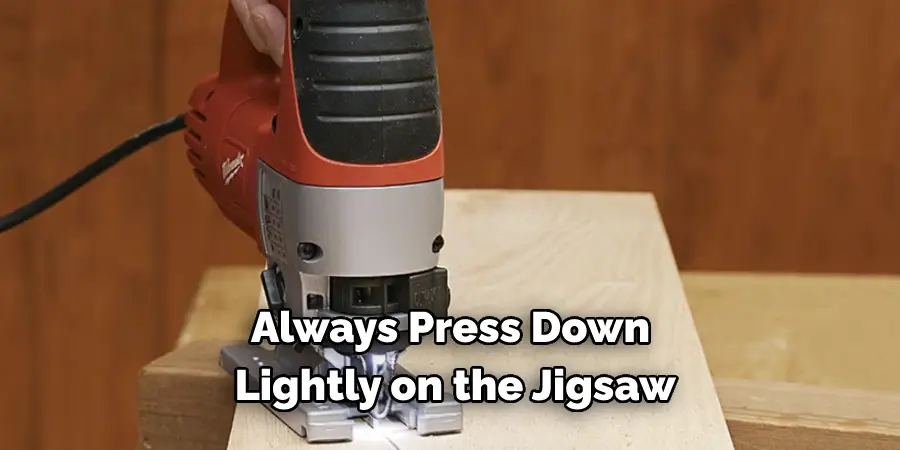
Follow these tips, and you’ll be cutting plywood with a jigsaw without splintering in no time!
Conclusion
As you can see, knowing how to cut plywood with a jigsaw without splintering is a fairly simple process. Taking the time to figure out the proper approach and techniques to use will help ensure that when you do make the cut, it will be clean and precise. It’s also incredibly important that you wear safety goggles when using power tools, as sawdust can cause lasting damage if it gets in your eyes.
All-in-all, if you follow a few easy steps like clamping down the wood, using an appropriate blade for the material, using plenty of light and keeping the jigsaw on a slow speed setting, then you’ll be able to easily make accurate cuts in plywood without any danger of splintering. Knowing how to properly cut plywood with a jigsaw is always going to save time and effort during home renovation projects – happy cutting!

